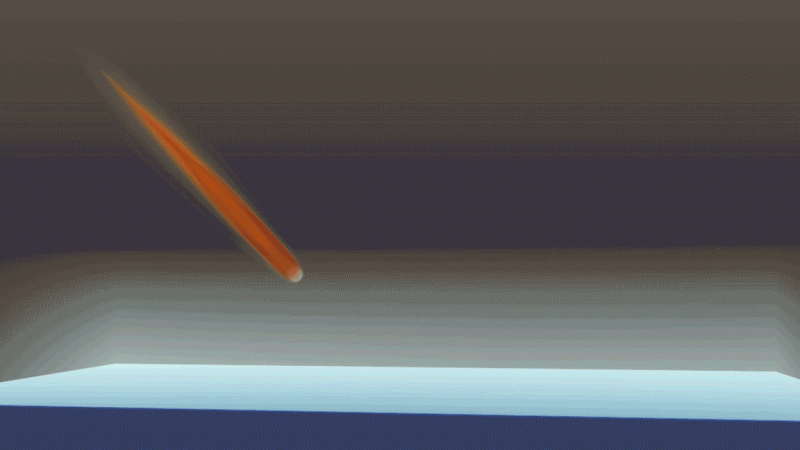If an asteroid collision takes place on Earth, it will have more chances of landing in the sea, as almost 70 percent of Earth's surface is covered with water.
Researchers from the Los Alamos National Laboratory (LANL) created a visual to assess the impact of asteroid crash in the sea and the results were shocking!
The researchers used high-performance computing and replicated the potential outcome of different types of asteroids crashing into the ocean. They even tried seeing what would happen if the rock blasts above the sea level before it crashes into the ocean. The researchers found that there could be great variations in the transmission of the asteroid's kinetic energy to the water which depends on various factors, but a tsunami caused by such an impact is not likely to destruct the coastlines like a closer collision would.
But this crash could lead to some severe outcomes which can be very dangerous and cause drastic changes in the climate. The collision can lead to a mid-ocean asteroid splash. If the asteroid will be extremely hot, it is likely to send an enormous quantity of water, around hundreds of megatons into the atmosphere. This instance can cause greenhouse effect if this splashed water and water vapour gets into the stratosphere and this would lead to dramatic alterations in the climate.
Such studies aid NASA researchers in knowing and understanding the outcomes of asteroid impacts on the planet and climate. It also helps NASA's Office of Planetary Defense in making decisions regarding how to chase the near-Earth objects (NEOs) in the finest way possible.
The LANL researchers won an award at Supercomputing 2016 for their video titled "Visualisation and Analysis of Threats from Asteroid Ocean Impacts," lanl.gov quoted in a statement.

- NASA's OSIRIS-REx: The spacecraft that's protecting us from Trojan asteroids
- NASA images of the Red Planet are strong evidence that aliens exist! [VIDEO]
- NASA's JunoCam captures Jupiter's stunning 'string of pearls'
- Ruby-producing mineral forms the clouds of exoplanet HAT-P-7b!

















